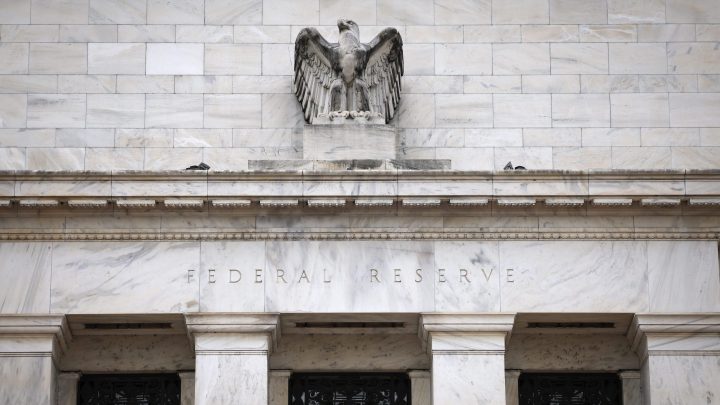
Why are bond yields so high right now?

For the past couple of days, the yield on 10-year U.S. Treasury debt has flirted with and briefly exceeded 5%. The last time the yield on 10-year Treasurys was that high was June 2007 — 16 years ago. As bond yields soar, they’re taking all kinds of other interest rates with them. Mortgages, for starters: Those are at around 8%. So why is this happening right now?
Ten-year Treasurys have to look good … for 10 years. They have to look good, in other words be competitive, compared to the interest rates of today and the interest rates of the future. Right now, yields on the 10-year note are high, in part, because people believe the interest rates of the future will also be high. The Federal Reserve has been signaling this for months.
“People are taking the Fed seriously,” said Scott DiMaggio, co-head of fixed income at AllianceBernstein. For a while, bond markets didn’t believe the Fed would keep future interest rates high.
“We go back four, five, six months ago, the market was working with a narrative of a recession and significantly slower economic growth. They were forecasting that the Fed would have to reduce rates next year by five or six times,” DiMaggio said.
So why did bond investors suddenly start believing that interest rates would not fall in the future, but instead would stay high?
“The economy is proving to be more resilient,” said Steve Laipply, global head of bond exchange-traded funds for BlackRock. Strong jobs numbers and other data have kept trickling in, suggesting maybe we won’t have a recession next year so maybe the Fed won’t have to cut rates.
“There’s also a growing concern around the deficit,” Laipply said.
The annual budget deficit is growing, which means the government is issuing more and more debt. Somebody’s gotta buy it. Somebody’s gotta be convinced to buy it. You know what’s really convincing? Making more money. So the borrower has to pay the buyer higher yields.
In addition to expectations of future interest rates, that’s another reason current 10-year yields are so high. Or are they?
“You know, actually, historically speaking they’re not that high,” said David Krause, emeritus professor of finance at Marquette University. He pointed out that on average over 100 years, long-term Treasury yields were 5.2%. Close to where they are now.
“I think what seems high is that we haven’t had these rates for maybe 20 years. They were artificially depressed by the Federal Reserve,” Krause said.
Between the Great Financial Crisis and the pandemic, it seems like one emergency after another has had the Fed trying to keep short-term interest rates low across the economy, which has filtered into 10-year Treasurys too, Krause said. But that era might just be over.
There’s a lot happening in the world. Through it all, Marketplace is here for you.
You rely on Marketplace to break down the world’s events and tell you how it affects you in a fact-based, approachable way. We rely on your financial support to keep making that possible.
Your donation today powers the independent journalism that you rely on. For just $5/month, you can help sustain Marketplace so we can keep reporting on the things that matter to you.

















